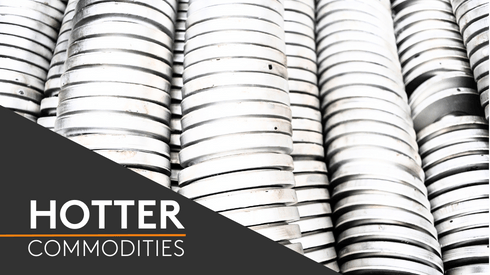Fastmarkets’ daily steel hot-rolled coil index, fob mill US was calculated at $35.96 per hundredweight on Friday November 13, little changed from $36 per cwt on November 12 and up 4.4% from $34.43 per cwt a week ago on November 6.
Inputs were received in a range of $34-38 per cwt.
Heard in the market
The lower end of that range represents prices for repeat spot customers at mills that had set aside tons for them. The higher end of the range represents prices for 2021 material or for small spot quantities that become available, for example, when a mill produces more than expected, market participants said.
Ordinary spot tons from US mills remain few and far between. Case in point: Lead times for HRC in a healthy market, ordinarily four to eight weeks, are out as far as February – more than 11 weeks. The result: Supply chain disruptions due to material shortages are no longer a risk but rather a matter of time, sources said.
Another impact: Mills have effectively surrendered the spot market to service centers, with master distributors and service centers with inventory selling material to smaller service centers or those in desperate need of material at a steep premium to mill pricing, sources said. The phenomenon of service centers selling among each other, common in weak markets, is unusual in strong ones, some noted.
With lead times into February in some cases, prices are likely to remain strong well into the first quarter and perhaps until the summer months – when the market typically slows on automotive shutdowns, sources said.
Strong scrap prices are also bolstering HRC prices. Prime scrap prices are expected to remain firm in December and January, when automakers typically slow operations for year-end holidays – resulting in less generation of prime grades, they said.
In addition, the bullish outlook for HRC stems from consumers spending more on steel-intensive goods – not only pickup trucks and appliances but also items such as all-terrain vehicles and the trailers needed to carry them, for example – instead of vacations and dining out, sources said. And that trend should remain durable even as Covid-19 cases continue to rise, some said.
But others said the longer-term impact of Covid-19 remains a wildcard for US HRC prices, especially as infections rise over the winter months and cities such as Chicago grapple with whether to implement lockdown measures on par with those rolled out in the early days of the virus crisis last spring.
Still, most sources contacted by Fastmarkets said prices would continue to move upward even in the face of such measures – assuming they don’t again result in the idling of major manufacturing operations or new waves of layoffs.
Quote of the day
“[Mills] are not even worried about orders. They have more people banging on their door to get tons than they know what to do with,” one Great Lakes service center source said. “They are forcing the whole downstream community to predict way ahead… It’s November, and we’re trying to predict what will happen in February or March… Eventually, imports will come back in. But pricing and shortness of supply are with us, guaranteed, for the next three, four months.”
Index calculation
Data was carried over in the consumer sub-index at the price reporter’s discretion. No data was gathered from a data submitter agreement.





